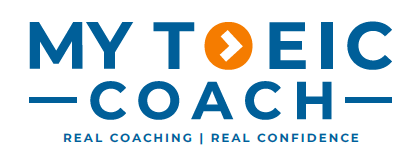The TOEIC Door Isn’t Stuck — You’re Just Using the Wrong Key
You’re standing in front of the TOEIC door.
You’ve been told this door leads to better opportunities, promotions, and personal achievement.
You’ve also been handed a set of keys:
Vocabulary memorization drills.
Endless grammar practice.
Repeating the same mock tests.
You insert the key.
It doesn’t turn.
You jiggle it.
You press harder.
You’re told to “just practice more.”
But the harder you twist, the more obvious it becomes:
This key isn’t opening anything.
Maybe you even start to believe the door was never meant to open for someone like you.
That no matter how hard you try, it’s just not going to happen.
But here’s the truth:
The door isn’t stuck.
You were just given the wrong set of keys.
This isn’t about working harder.
It’s about working smarter — crafting the key that actually fits.
The Old Key Trap — When Familiar Study Methods Keep You Locked Out
It’s natural to trust the tools that worked before.
In school, memorization and repetition were reliable keys.
You were rewarded for following instructions and avoiding mistakes.
But TOEIC isn’t a school exam.
It doesn’t care how much you’ve memorized.
It tests:
Your ability to process information quickly.
Your decision-making under time pressure.
Your mental flexibility when things go sideways.
If you’re still using the same study keys you were handed years ago, you’re forcing a key into a lock that was never designed for it.
Who Moved My Cheese? — The Lesson We Ignore
This isn’t a new problem.
Spencer Johnson’s classic, Who Moved My Cheese?, told this story decades ago.
It’s a simple tale of mice and tiny humans trapped in a maze, searching for cheese.
The ones who succeed are those who accept that the cheese has moved — and immediately go looking for a new path.
The others?
They waste time blaming the maze.
They get stuck pacing back and forth, waiting for things to “go back to normal.”
That’s exactly what happens to TOEIC learners trapped in outdated study routines.
They don’t realize that the “cheese” — what works — has moved.
The strategies that worked in school are no longer enough in the testing room.
But just like in Johnson’s story, the way out is simple:
Stop waiting for the old keys to work.
Start looking for a better key.
Why Pushing Harder Doesn’t Open the Door
Many learners think the problem is effort.
“If I study harder, it will open.”
“If I take more practice tests, it’ll eventually work.”
But keys aren’t about force.
They’re about fit.
The TOEIC rewards test-takers who can:
Recognize when a method has stopped working.
Adapt their approach, even if it feels awkward at first.
Focus on process over perfection.
It’s not about how long you twist the key.
It’s about whether you’re using the right one.
Making New Keys — The Real Skill You Need
Adaptability isn’t a personality trait.
It’s a skill you build through action.
Making a new key means:
Letting go of outdated study habits.
Being willing to experiment with uncomfortable techniques.
Shifting from memorization to strategic decision-making.
The learners who unlock the TOEIC door aren’t necessarily the smartest.
They’re the ones willing to craft a better key.
Summary — Stop Forcing. Start Crafting.
The TOEIC door isn’t jammed.
Old habits like rote memorization are keys that no longer fit.
Progress belongs to those who adjust, not those who grind harder.
You don’t need more keys.
You need the right key.
And it starts the moment you stop forcing and start crafting.
Want to Learn More?
Our blog is full of practical strategies that help test-takers like you build better habits, overcome common blocks, and improve TOEIC scores through smarter, easier methods. Try our free TOEIC Block quiz now!
